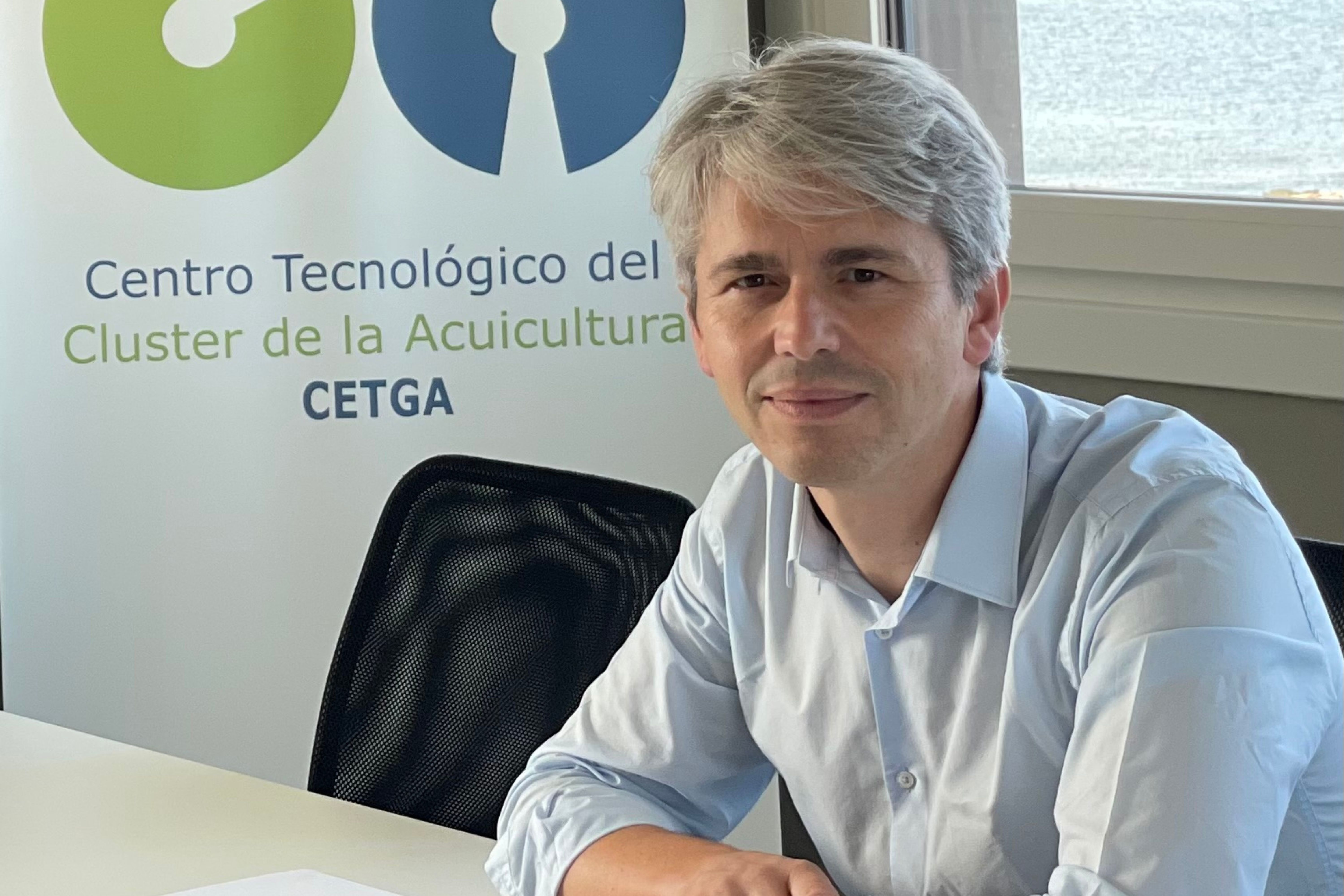
Latest information

Interview with Santiago Cabaleiro, Director of the Technological Centre of the Aquaculture Cluster - Cetga
The Technology Centre of the Aquaculture Cluster - Cetga, founded in Ribeira in 2002, continues to strengthen its position as a world reference in the field of innovative and sustainable aquaculture. We discuss the challenges and opportunities facing the sector with its director, Santiago Cabaleiro.
What is Galicia's economic weight in the global aquaculture sector and what kind of companies does the cluster bring together?
Galicia is the European region that produces the most tonnes, with mussels and turbot being the main species farmed here. We work with leading European companies and associations in the production and technology sectors. This is something that took a long time to achieve and is also difficult to maintain, as it required invitations to tender from administrations, Galician universities, public research centres, technology centres, as well as companies and associations. Given how difficult it was to create this ecosystem, it is so important to take care of it and maintain it, because competition is intense and the only way to lead is to be able to research and innovate with the same quality as always, following the demands of society.
Aquaculture has been declared a strategic sector by the European Union. What are the main challenges facing aquaculture today and what opportunities does our Community have in this field?
Europe imports 75% of the seafood products it consumes from third countries. This weakness makes aquaculture a necessity to improve food sovereignty and, in turn, to generate wealth and increase employment in economically and demographically depressed areas, where breeding centres or farms are usually located.
Aquaculture faces a number of challenges. One of them is the difficulty of obtaining new farming licences. Administrative hurdles and bureaucracy often make it impossible to obtain these new farming licences, thus hindering the growth of aquaculture. Another challenge is a social one. In general, the public does not know what aquaculture is and what it means for a region or country to have its own aquaculture production. It is necessary to bring this sector closer to society and to communicate its importance in guaranteeing the consumption of healthy and safe seafood.
Galicia is a leader in aquaculture production and, at the same time, in research, and this is where our community is putting everything on the line to remain a leader. It is impossible to be a leader in any field of knowledge without a strong industry to give meaning to all the research efforts.
How do you assess the current diversification of Galician aquaculture production?
In order to evaluate this question, it is always necessary to carry out a preliminary study and see what other regions or countries are doing. Galicia stands out within the European Union as one of the regions where the most species of molluscs and fish are farmed. One of the last species to be included in the Galician aquaculture sector was sole. It began with a firm commitment to investment in R&D by a Galician company more than twenty years ago, which was later joined by another, and today we are the two leading companies in Europe in the farming of this species.
What are Cetga's main areas of R&D&I?
We are mainly involved in fish research. Since its creation, Cetga has focused on fish health, sustainability and welfare. These lines have not changed over the years, although they have adapted to the challenges of both a changing natural environment and social changes related to the environment and welfare.
For both aquaculture companies and Cetga, our research strategy is focussed on our relentless efforts towards the sustainability of aquaculture activity, reducing the carbon footprint and deepening the circular economy. We also promote lines of research with Galician universities to further improve the care and welfare of fish.
One of Cetga's most recent works is related to the application of artificial intelligence for aquaculture 4.0. What does it consist of?
This project aims to improve the productivity of an aquaculture farm by analysing production parameters in real time, reducing risks and improving production indicators, through the use of technologies integrated with machine learning and artificial intelligence algorithms that analyse the data generated, both with probes and images, in real time, so that their analysis can act autonomously on the equipment, with the aim of helping to manage aquaculture production by reducing risks, improving sustainability and production indicators.
With this technology, we want to make Galician aquaculture a pioneer once again, incorporating technologies that will allow us to remain at the forefront of the aquaculture sector in Europe.